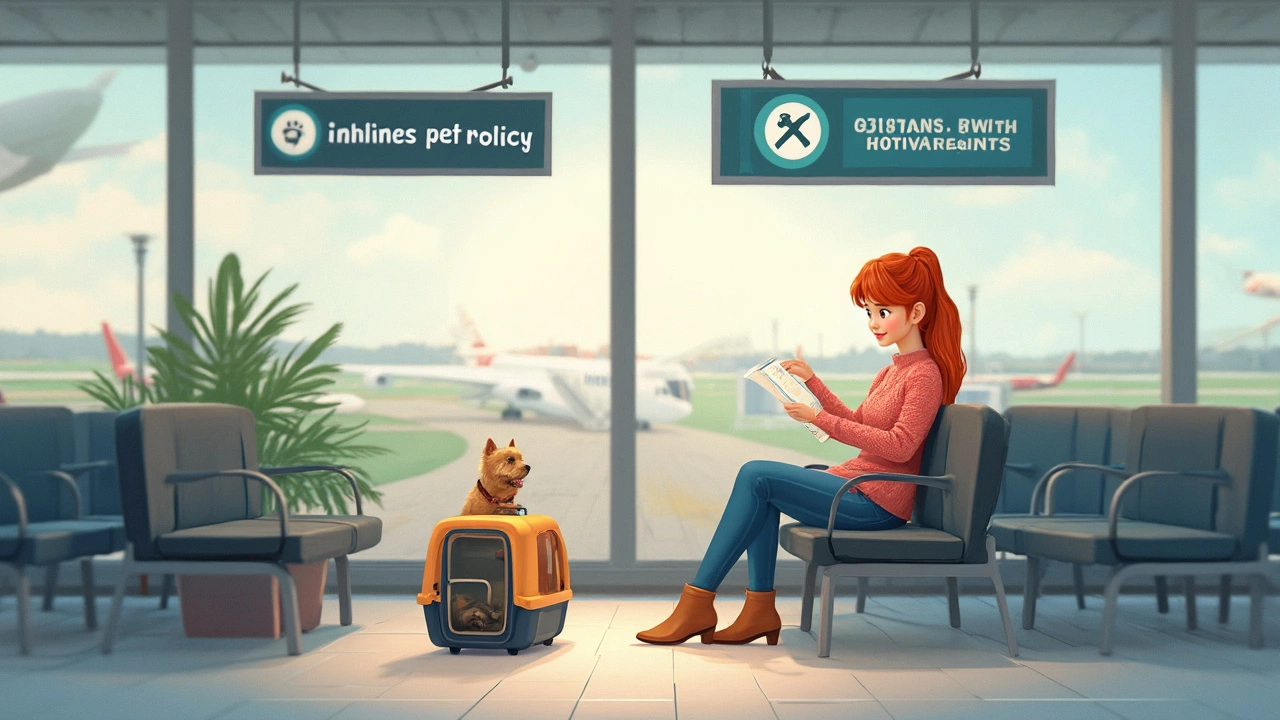Cabin Regulations for Dogs: What You Need to Know
Did you know most airlines won’t let a 50‑pound dog sit beside you? Knowing the exact rules can save you from surprise fees and denied boarding. Below is a practical guide to the most common cabin regulations that affect every pet owner who wants to travel by air.
Size and Weight Limits
Every carrier sets a maximum combined weight for pet and carrier, usually between 15 and 20 lb (7‑9 kg). If your dog exceeds that limit, you’ll need to book cargo space instead of cabin seats. Small breeds like Chihuahuas and Pomeranians usually fly without issues, but even they must fit inside an airline‑approved carrier that fits under the seat in front of you.
Measure the carrier’s length, width, and height before you buy. Most airlines require the carrier to be no larger than 18 × 11 × 10 in (45 × 28 × 25 cm). If the carrier is too big, you’ll be turned away at the gate. Keep the carrier lightweight yet sturdy – a hard‑shell case can protect your dog but adds weight, while a soft‑sided bag can compress under pressure.
Documentation and Health Checks
Airlines typically ask for a recent health certificate signed by a vet, usually within 10 days of travel. Some destinations also need rabies proof, microchip verification, or an import permit. Double‑check the airline’s website – requirements differ between domestic and international flights.
Vaccinations must be up‑to‑date, and you’ll often need a record of deworming. If you’re traveling to the EU, a pet passport is mandatory. Keep all paperwork in a folder that’s easy to pull out at check‑in; a missed document can cause delays or even a forced return home.
Besides paperwork, airlines may require a specific type of carrier. Some prefer ventilated crates, while others allow soft carriers with a metal frame. The carrier must have a secure closure and a label with your contact details.
When booking, inform the airline that you’re bringing a dog. Seats near the front of the cabin often get priority for pet owners because the temperature is more stable and there’s less turbulence. Early booking also gives you a better chance of securing a spot for your pet, as many airlines limit the number of animals per flight.
At the airport, arrive at least two hours early. You’ll need to pass through a pet check‑in desk where staff will verify the carrier, paperwork, and weight. Some airlines require a small fee – usually between £30 and £70 – which you’ll pay at this point.
During the flight, keep the carrier under the seat in front of you. Do not open it unless instructed by crew. If your dog gets nervous, a familiar blanket or a chew toy can help calm them. Never remove the carrier in the aisle; this can lead to safety issues and penalties.
After landing, follow the airline’s procedures for retrieving your pet. Most airlines let you collect the carrier at the baggage claim area, while others have a special pet exit door. Have your pet’s leash and a water bowl ready for the post‑flight walk.
By staying within size limits, having the right paperwork, and booking early, you’ll avoid most headaches and enjoy a smooth cabin experience with your dog. Remember: each airline has its own quirks, so always double‑check the specific rules before you pack the carrier.
- Morgan Ainsworth
- 0 Comments
Can I Put My Pet Carrier on My Lap During a Flight? What You Need to Know
Thinking about flying with your furry friend? This article breaks down whether you can keep your pet carrier on your lap during a flight and what airline rules actually say. Get insights on airline policies, practical travel tips, and comfort hacks for your pet. Learn about in-cabin carrier rules, exceptions, and how to keep your buddy stress-free. Make pet air travel as smooth as it gets.
View More
